Drosera anglica (Oblong-Leaved Sundew) - photos and description
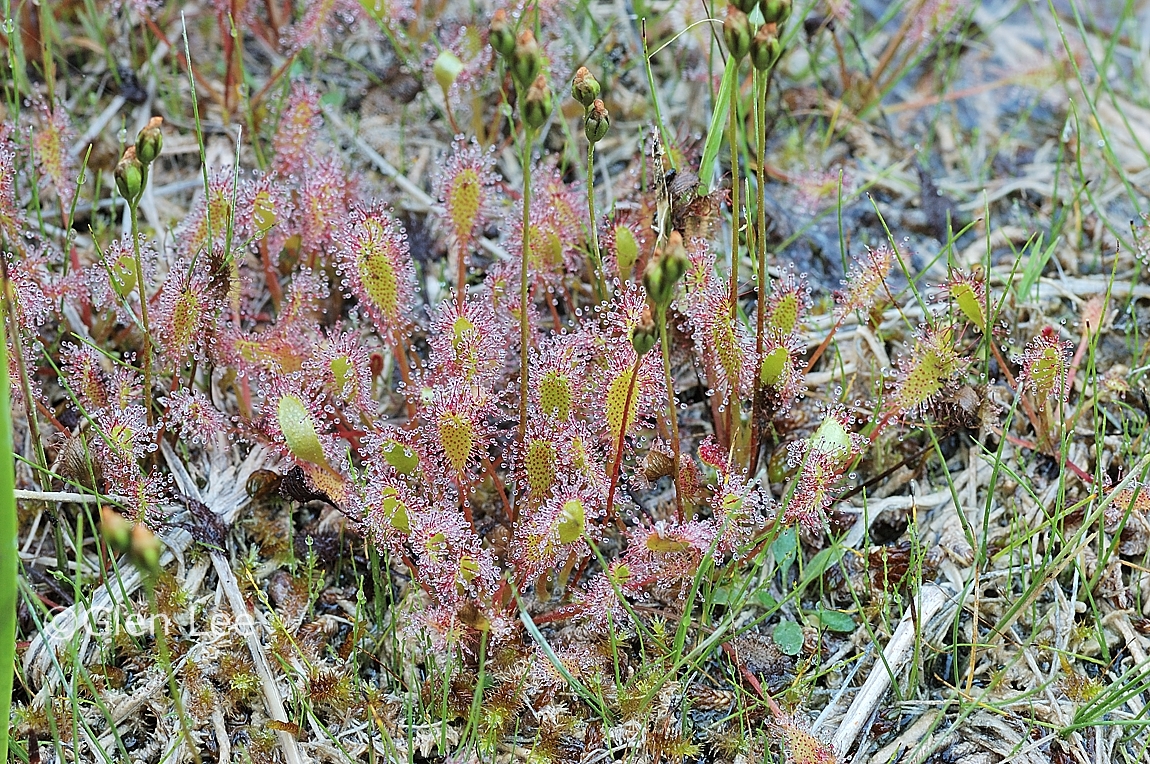
Early in the morning, leaves full of dew drops before
the sun burns most of the dew drops away
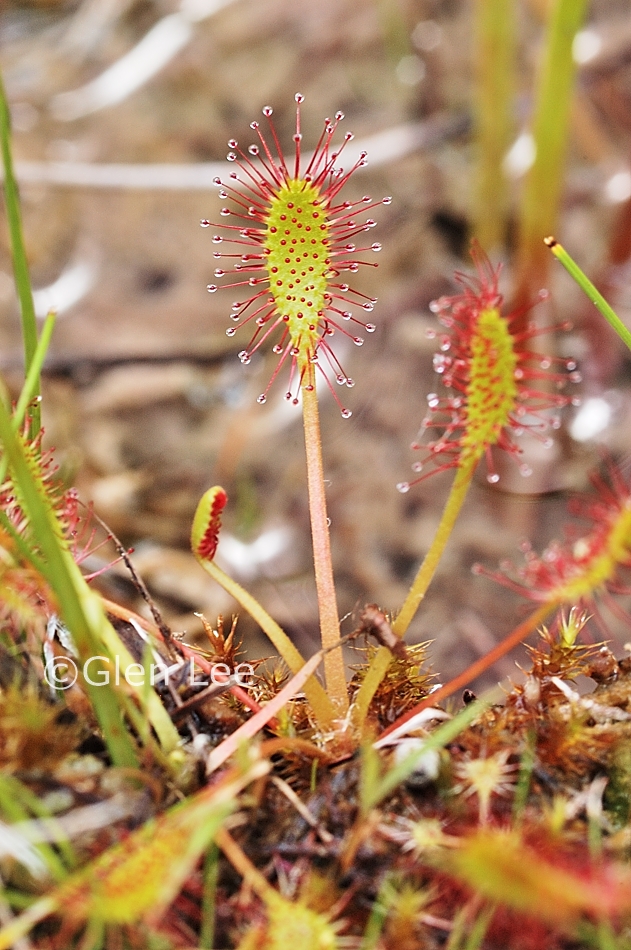
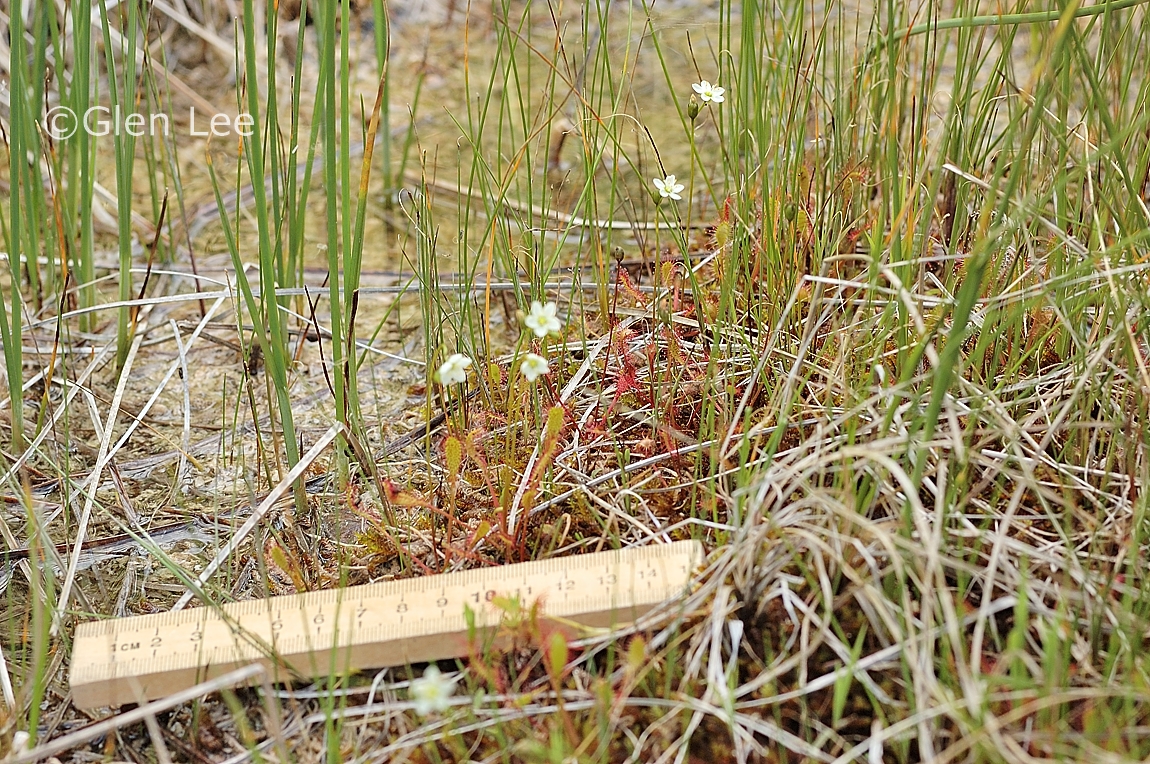
15 cm ruler
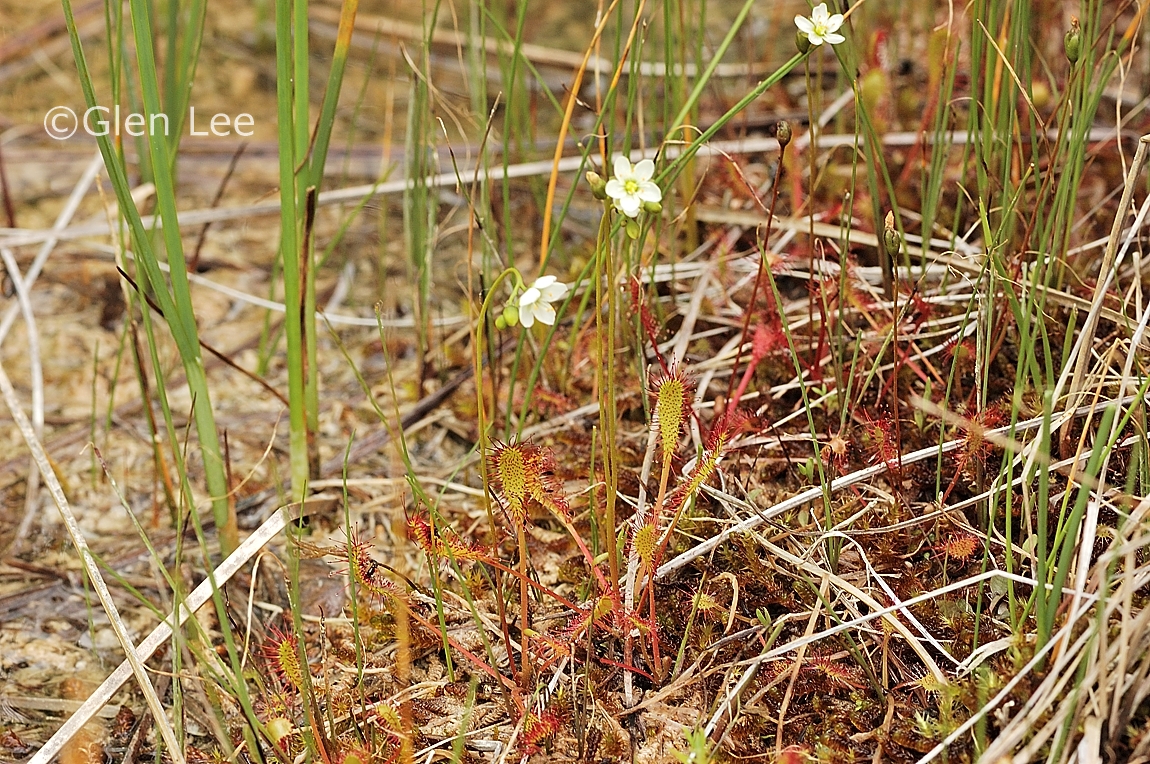
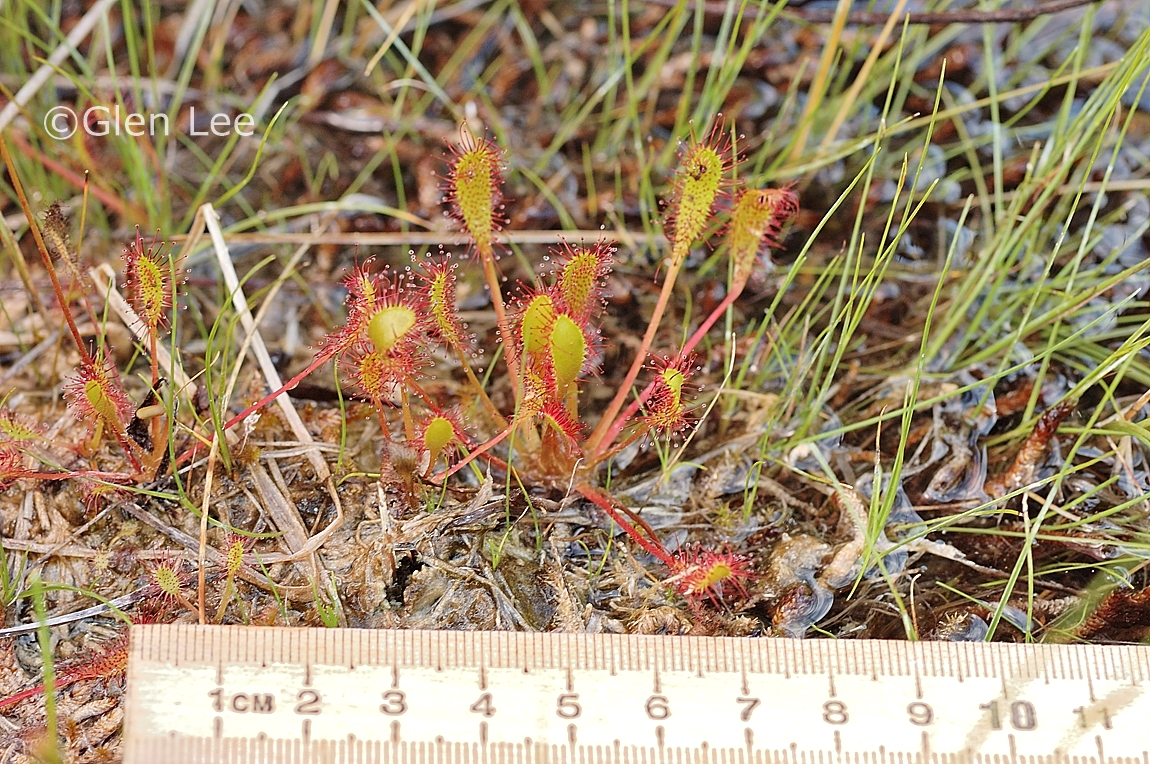
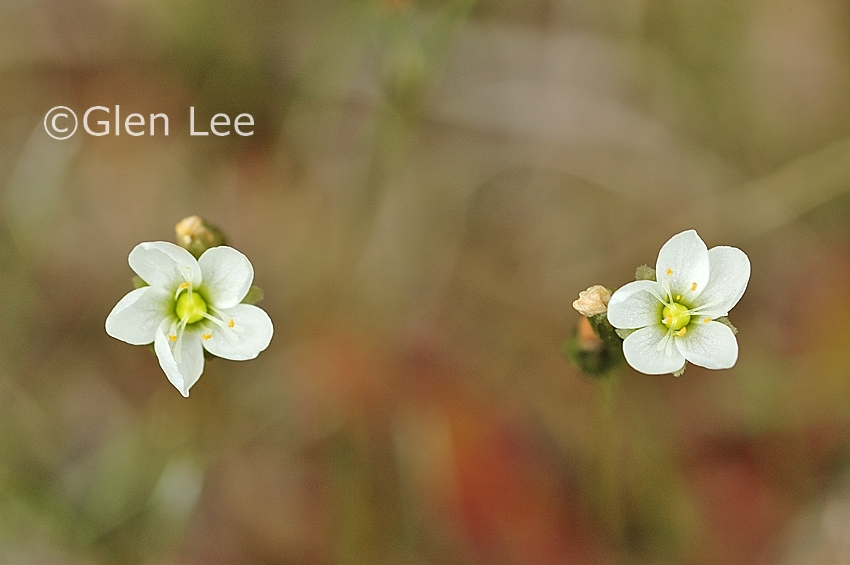
Origin: Native.
General: Tiny insectivorous plant, leaves growing
from a central rosette.
The plants eat small insects to provide them with the nitrogen which is
lacking where it lives. When an insect becomes entangled in the hairs,
the leaves bend inwards so that the insect comes into contact with fine,
inner hairs. Enzymes are produced by the hairs which dissolve the insect
which is then absorbed by the leaf. Only the insect's exoskeleton
remains which blows away when the leaf hairs uncurl to become erect
again, ready for the next meal.
Flowers: Small white flowers in cymes born on a leafless scape. Flowers measured at 9 mm in diameter.
Leaves: Leaves oblong, blades measured from 10 to 15 mm long and 3 to 4 mm wide. Each leaf with glandular hairs, the hairs exuding a sticky drop at their tip.
Height: Height listed in Budd's Flora to 10 cm, we measured scapes to 12 cm tall.
Habitat: Nitrogen-poor bogs in the boreal forest. We have observed these Sundews prefer growing close to the waterline. Grow among the sphagnum moss and grasses. We have seen them growing in the same bogs as its cousin Drosera rotundifolia which seems to prefer living on small hummocks 15 cm to 30 cm above the waterline.
Abundance: Rare, ranked as an S3 (as of 2021) by the Saskatchewan Conservation Data Centre.
Similar species: There are 3 species of Drosera
native to the province, they can be distinguished by the shape of their
leaves:
- Drosera rotundifolia
has leaves that are more or less orbicular, this plant is common.
- Drosera anglica has
leaves that are oblong, this plant is rare.
- Drosera linearis
has leaves that are linear, this plant is extremely rare.
When and where photographed: The above photos were taken on July 16th and 22nd, Duck Mountain Provincial Park, 300 km north east of our home in Regina, SK.